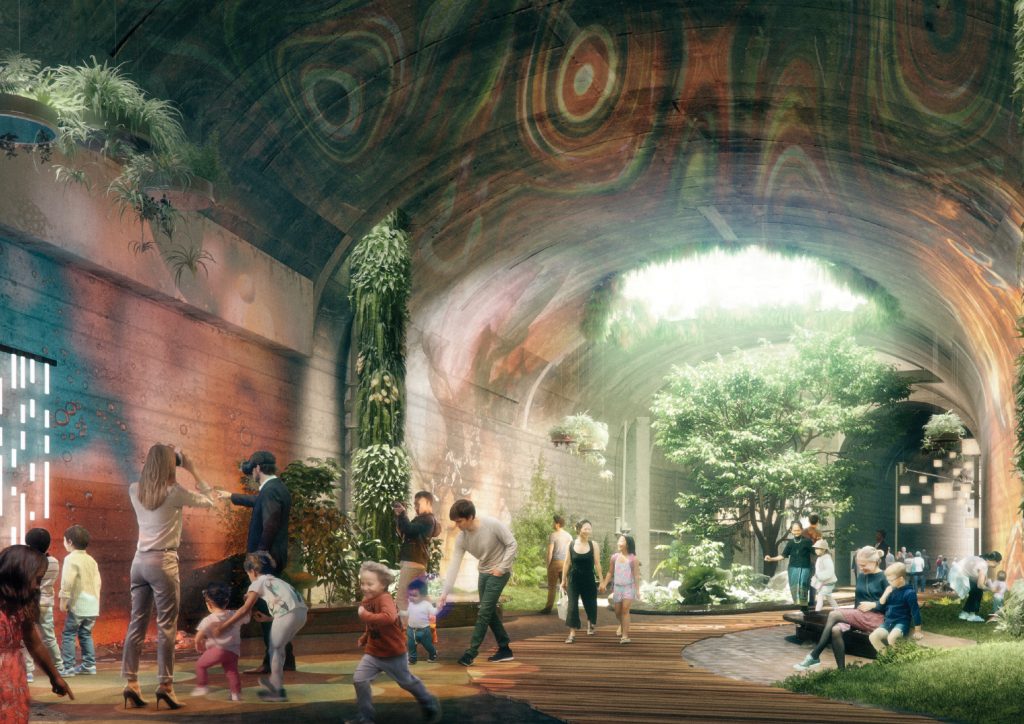Light At The End Of The Tunnel
Collette Skinner, Amy Clark, Michael Richards, Robert Reid, Susanna Tomassen, Kate Tuff, Tiffany Supatra, Emily Cassar, Jason Pereira, Nazmul Khan, Nicholas Lucchese, Aiden Morse, David Garcia, Laurence Hardy, Sam Shepherd
Fostering Resilience: Connecting Communities through Sustainable Design
Fostering Resilience: Connecting Communities through Sustainable Design
In these dark times, amongst crises including climate change and pandemics, people across the world have been re-assessing their relationship with their city and public spaces. How do we capitalise on this opportunity while continuing to meet the needs of our people to find connection?
Nestled under the bustling streets of Sydney lies an unawakened oasis of limitless possibilities. The abandoned railway tunnels of St. James beneath the CBD were once repurposed to protect the public during WW2, showcasing the resilience of the Australian people. These historical tunnels, untouched since, yearn to be regenerated and reborn as part of a new sustainable, social and public infrastructure accessible to all.
If we look to the tunnel’s future, what light emerges from the end?
With flexibility and diversity at the core of design, we envision an adaptable, democratic space that organically creates community connections – with ample nooks for music, exhibitions, performances and vending. The blank concaves of the tunnels present the opportunity to project human stories, linking past and present through a virtual experience inclusive from all perspectives. Redirecting public spaces underground creates a safe space for us to escape the contrasting cityscape above with controlled acoustics and lighting that forms an immersive, atmospheric environment that rejuvenates the mind and supports the well-being of the people. The space will unlock alternative routes within our city, linking transport nodes and city districts through an innovative and engaging new plane of travel.
